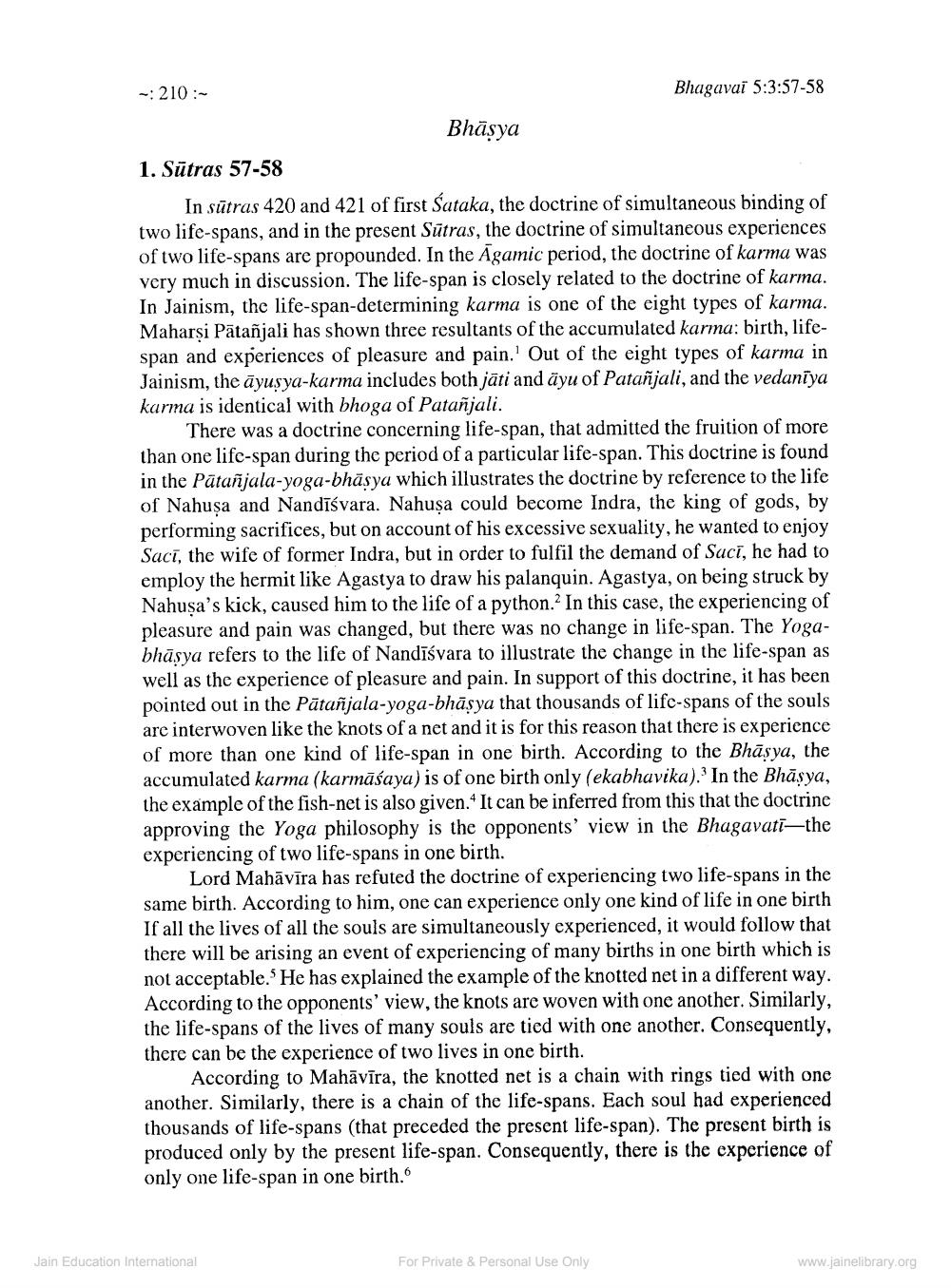________________
-: 210 :
Bhagavai 5:3:57-58
Bhāsya 1. Sütras 57-58
In sūtras 420 and 421 of first Sataka, the doctrine of simultaneous binding of two life-spans, and in the present Sūtras, the doctrine of simultaneous experiences of two life-spans are propounded. In the Agamic period, the doctrine of karma was very much in discussion. The life-span is closely related to the doctrine of karma. In Jainism, the life-span-determining karma is one of the eight types of karma. Maharşi Pātañjali has shown three resultants of the accumulated karma: birth, lifespan and experiences of pleasure and pain. Out of the eight types of karma in Jainism, the āyusya-karma includes both jāti and äyu of Patañjali, and the vedaniya karma is identical with bhoga of Patañjali.
There was a doctrine concerning life-span, that admitted the fruition of more than one life-span during the period of a particular life-span. This doctrine is found in the Pātañjala-yoga-bhāsya which illustrates the doctrine by reference to the life of Nahușa and Nandīśvara. Nahusa could become Indra, the king of gods, by performing sacrifices, but on account of his excessive sexuality, he wanted to enjoy Sacī, the wife of former Indra, but in order to fulfil the demand of Saci, he had to employ the hermit like Agastya to draw his palanquin. Agastya, on being struck by Nahusa's kick, caused him to the life of a python. In this case, the experiencing of pleasure and pain was changed, but there was no change in life-span. The Yogabhāsya refers to the life of Nandīśvara to illustrate the change in the life-span as well as the experience of pleasure and pain. In support of this doctrine, it has been pointed out in the Pātañjala-yoga-bhāsya that thousands of life-spans of the souls are interwoven like the knots of a net and it is for this reason that there is experience of more than one kind of life-span in one birth. According to the Bhāsya, the accumulated karma (karmāśaya) is of one birth only (ekabhavika). In the Bhāsya, the example of the fish-net is also given. It can be inferred from this that the doctrine approving the Yoga philosophy is the opponents' view in the Bhagavatī—the experiencing of two life-spans in one birth.
Lord Mahāvīra has refuted the doctrine of experiencing two life-spans in the same birth. According to him, one can experience only one kind of life in one birth If all the lives of all the souls are simultaneously experienced, it would follow that there will be arising an event of experiencing of many births in one birth which is not acceptable. He has explained the example of the knotted net in a different way. According to the opponents' view, the knots are woven with one another. Similarly, the life-spans of the lives of many souls are tied with one another. Consequently, there can be the experience of two lives in one birth.
According to Mahāvīra, the knotted net is a chain with rings tied with one another. Similarly, there is a chain of the life-spans. Each soul had experienced thousands of life-spans (that preceded the present life-span). The present birth is produced only by the present life-span. Consequently, there is the experience of only one life-span in one birth.
Jain Education International
For Private & Personal Use Only
www.jainelibrary.org




